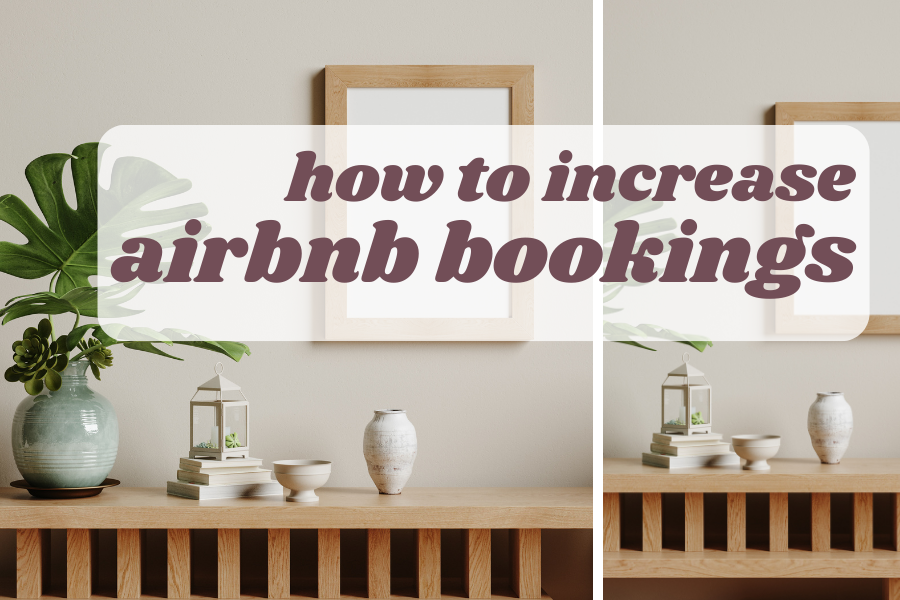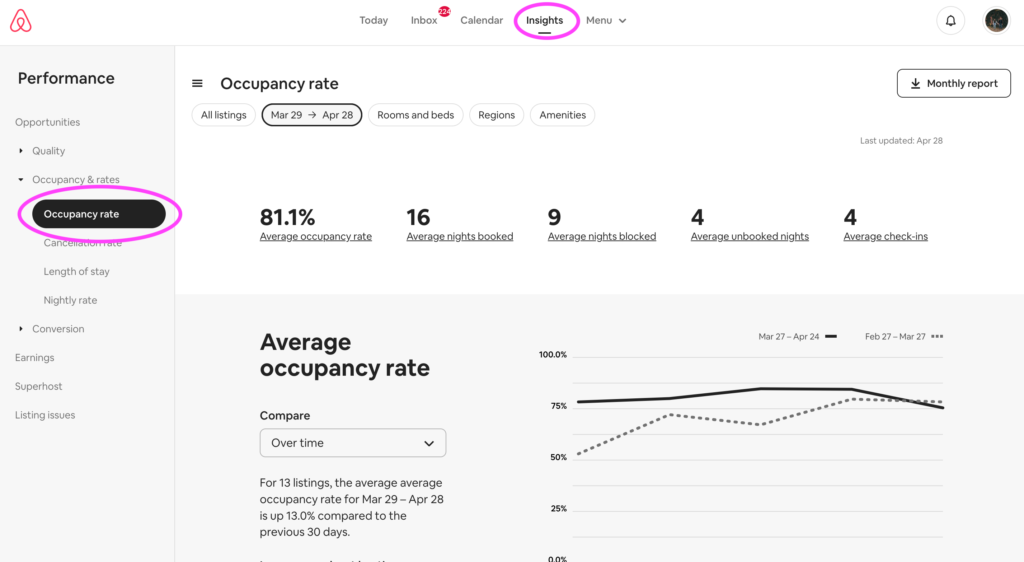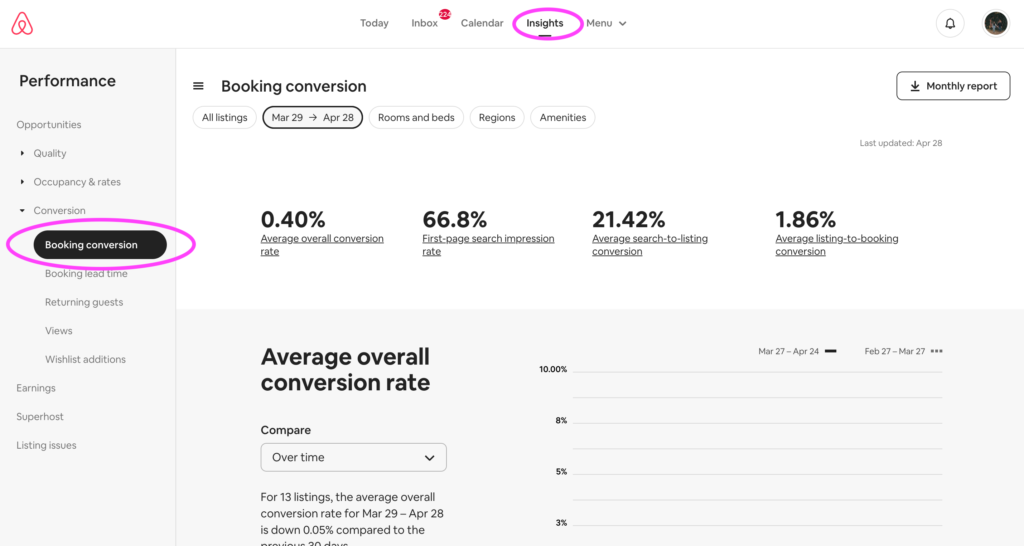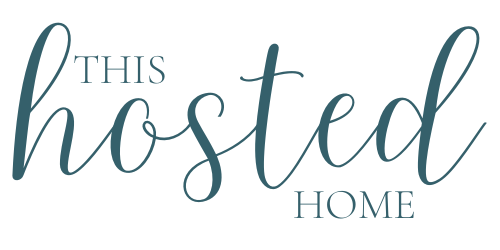If you’re a host looking to optimize your listing and increase revenue, I’ve got you covered with proven tips for how to increase Airbnb bookings in this post.

It’s true… Airbnb isn’t what it was just a few years ago for hosts, and many are seeing decreased bookings as markets get flooded with supply– but if you’re in it for the long haul and you’re willing to get to the bottom of how to increase Airbnb bookings and make needed changes to your listing(s), you’ll be as good as gold.
The first step to increasing bookings and in turn, revenue, is by treating your Airbnb as a business, not a hobby. And if run well, an Airbnb business can be both profitable, enjoyable, and successful all around.
In this post, I’m going to share how to increase your Airbnb bookings by looking at an important component of any business: KPIs, or Key Performance Indicators.
This post is all about how to increase Airbnb bookings.
Are Your Airbnb Bookings Down?
In a world post-Covid, Airbnb success skyrocketed when folks began to have the flexibility to work remotely and weren’t confined to staying home (well techincally they were confined to staying home, but they weren’t… I don’t even know). But anyways, the rapid growth of Airbnb travel kind of triggered a ton of aspiring Airbnb hosts to jump into the game, causing supply to increase.
Now there’s plenty of data out there to show that Airbnb is not going anywhere and while supply has increased, new travelers join Airbnb by the day, so demand is increasing as well.
So don’t be discouraged, but DO know that if what you were doing pre-pandemic isn’t working anymore, its likely because the Airbnb space is evolving, competition is increasing, and we’re in a world now where you’ve got to be a little better and try a little harder as a host to be successful.
Check the Pulse on Your Listing
You might be familiar with the business mantra, “what gets measured gets managed.” You can do that by looking at your KPI’s, or Key Performance Indicators.
These indicators are like fingers on the pulse of your business. It’s the data you should be looking at on a weekly basis to see how your business is doing and where you can improve. And if you want to increase bookings, you’ve got to be on top of these indicators.
First, let’s look at the KPI’s you might want to track on a weekly basis, and then we’ll talk about how you can use them to increase bookings.
Cleaning Score
You can track the cleanliness of your listing(s) by visiting and doing weekly cleaning audits. If you can, get to your property once a week (or just one property per week if you have several), after your cleaner has been there. Rate their cleaning job on a scale of 1-5. If you don’t live near your property, you can consider checking in with a guest to see what they think of the cleaning job.
Check-In Issues
This is the number of guest check-in issues you’ve had that week. Anything from a guest not receiving their check-in instructions, to not being able to open the lockbox. Since both cleanliness and check-in process are part of the star rating scale that guest will score you on, it’s important to track how you’re doing with both- and ideally before you see it in the star ratings.
Guest Star Rating
Unlike the cleaning score and guest check-in issues mentioned above, the guest star rating is what’s called a “trailing indicator,” meaning that it’s an outcome that can’t be retroactively changed. Once a guest has rated and reviewed you, you can’t go back and change that rating.
So why track data that you can’t change? Well you can influence what your ratings will look like going forward, and the star ratings really do help diagnose potential problem areas in your business. If guests are giving you 4 stars for cleanliness, you know your cleaner isn’t doing a great job.
You should set a goal of having a 5 star rating each week.
Occupancy Rate

Your occupancy rate is your number of nights booked divided by your total number of available nights. Occupancy rate is one of the most important indicators of how your listing is performing. It’s crucial to have a pulse on what your average occupancy rate is at different times of the year so you can know what’s normal and what’s not, and when you need to really make an effort to increase bookings & occupancy.
You can see your average occupancy rate in Airbnb under “Insights.”
Weekly Revenue
Don’t just track your profit and loss at the end of the month. Instead, look at your revenue on a weekly basis as part of your KPIs. The reason you want to do this is so that you can be proactive in increasing occupancy and revenue for the remainder of the month if you don’t hit your revenue goal in one week. And since the whole goal of this post is to help you increase bookings and ultimately revenue, it’s another really important indicator to track.
First Page Search Impression Rate

This is the percentage of times your listing(s) appeared on the first page of search results out of the total search impressions that it got.
This metric can be extremely helpful to determine how your listing is doing in the algorithm and whether you might need to tweak your listing or amenity offerings for it to appear in more searches.
Many guests use filters when searching for a place to stay. So if your listing doesn’t indicate a popular amenity that guest search for (say, a hot tub), then you may not be appearing in as many searches as you could if you’d added a hot tub. This is sort of an extreme example, but you get the point.
You can find First Page Search Impression rate under “Insights”, then “Conversions”
Average Search-to-Listing Conversion
Search-to-listing conversion is the average number of times someone actually clicked on your listing page when it showed up in their personal search results.
What this metric can tell you is whether your listing title and cover photo are compelling enough for a potential guest to actually click through to your listing and see more.
if this metric is low, you may consider taking new photos, sprucing up your place, or changing up the listing title.
Average # Nights Booked
This metric tells you at, any give time, what the average number of nights a guest is typically booking your place for. This give you tremendous insight as to what type of guest you’re attracting and how long they like to stay at your place on average, which is important in determining who your target market is– a topic for another day, but SO important for marketing your listing.
Average Number of Guests
You guessed it– this is the average number of guests you’re getting per stay. Again, this is another metric that helpful in understanding your target market.
Average Lead Time
And finally, your lead time is how far in advance of the check-in date the average guest books. If your place is a vacation home that books up for the summer months in advance, you’re going to have a higher lead time that a host who’s got a place in a metro market where people tend to travel for business or VFR (visiting friends and relatives).
So… How to improve airbnb booking rate with KPIs
The point of looking at KPIs is to identify any root cause areas where your business is under performing, and in turn causing bookings to slow down.
Cleaning Score, Check-In Issues & Guest Star Rating
First, your cleaning score, check-in issues, and guest star rating are going to pinpoint any areas that your listing is underperforming in terms of guest issues and customer satisfaction. If you’re seeing a problem in any of these areas, its going to show up in your star ratings, causing your listing to perform poorly and you to get less bookings. If that’s the case, take action to improve in these areas.
Occupancy Rate & Weekly Revenue
Your occupancy rate and weekly revenue are going to be your indicators for how your listing is doing week-to-week. Over time, you will get a sense for where you want to be at in terms of revenue and occupancy rate each week. Tracking this over time helps you to understand the seasonality of your place and what revenue looks like at different times of the year.
You can’t really know if your bookings and revenue are in a good spot if you have nothing to compare them to. So the sooner you start tracking these things the better.
First-Page Search Impressions
Next, when it comes to your first-page search impressions, if this number is low, that’s going to tell you that you may need to open up more offerings and amenities on your listing to appear in more searches. If search-to -listing conversion is low, this often means you need a more compelling cover photo or a better listing description.
# Nights Booked, # Guests & Lead Time
Finally, average number of nights booked, average number of guests, and average lead time are all going to tell you a little bit more about your audience: who they are, how far in advance they plan, and how long they like to stay. I like to go above and beyond and politely ask my guests the reason for they’re stay so I can understand who my listing is appealing to. This is the target market that you’ll want to keep in mind when writing your listing description, deciding what amenities to add, and how to portray your property from a marketing standpoint.
Conclusion
With any issue you’re having in your Airbnb business, it always going to be critical to get down to the root cause of the problem. Understanding and measuring key performance indicators area great way to do that. I hope you found this post helpful in explaining some of the KPIs that can help you increase your bookings on Airbnb. If you enjoyed this read, you might also like:
The Ultimate Airbnb Cleaning Checklist Template Your Cleaners Will Live By w/ FREE Editable Template
Best Airbnb Decor Secrets that Will Get You Bookings and Have Guests Loving Your Place
This post was all about how to increase Airbnb bookings.
